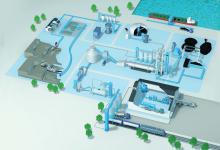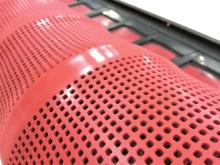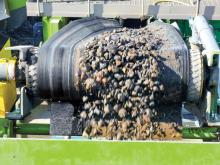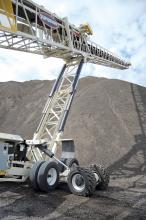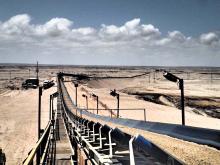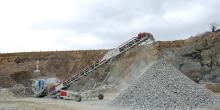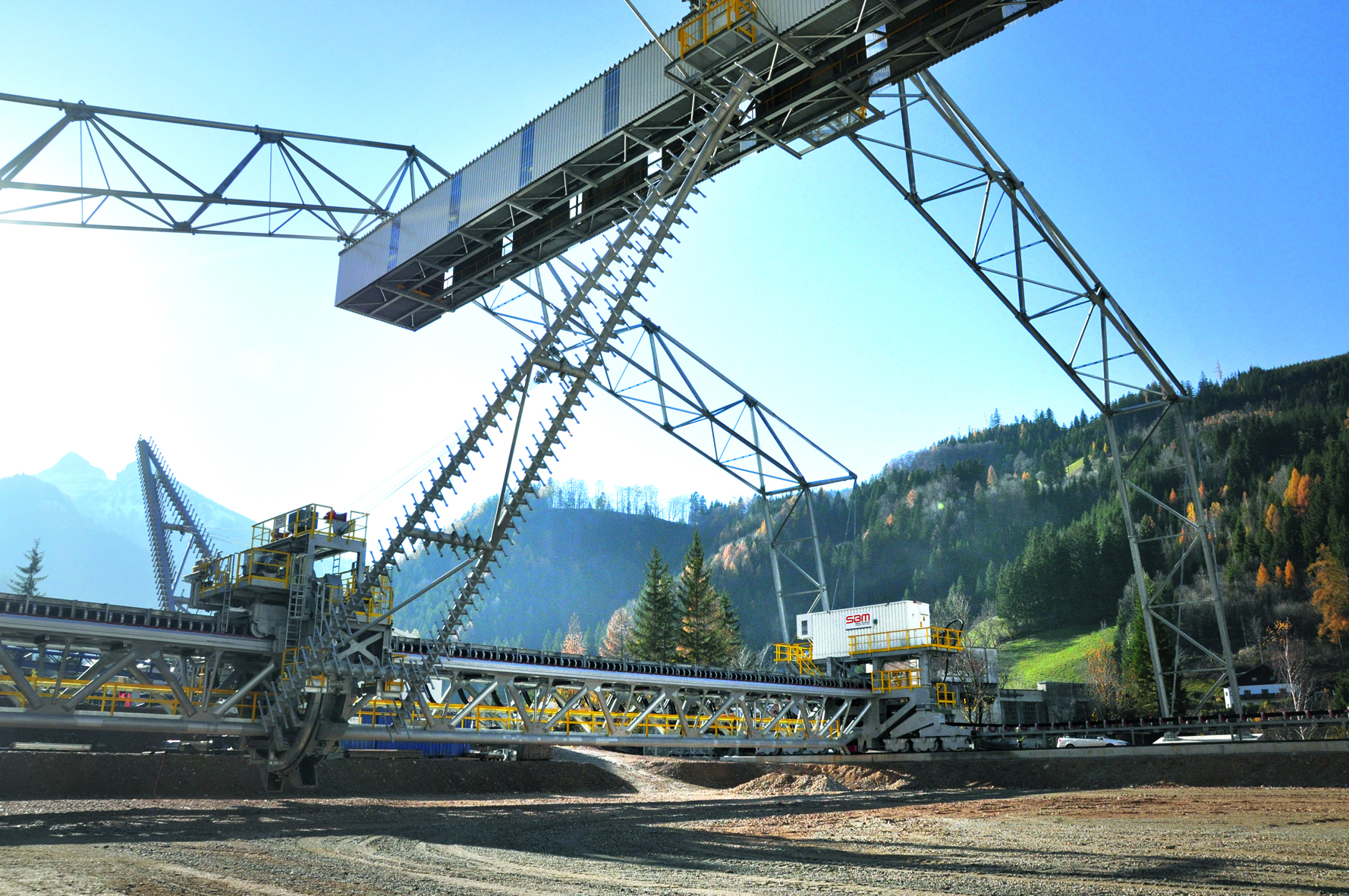
Conveyors have always played a key role in quarry operations but new developments are improving their potential to boost productivity, writes Patrick Smith.
With the high cost of fuel, conveyors are seen as an alternative hauling option in many European quarries, often offering benefits in stockpiling.
Such is the business that only recently
The company specialises in the design, manufacture and installation of a range of material handling systems for mining, port and aggregate industries across the world, with the core of its business focused on exports to South America, Africa, India and Europe.
Malachy Gribben bought the company out in 2008 along with Adrian McCutcheon. As part of the sale, both men will remain in the company to continue to lead the business, 90% of which is export.
“As a business it is 100% debt-free and the sale lays a strong foundation for our plans for future growth,” says Gribben who is commercial director.
He said the company’s expansion plans, intended to be fulfilled over a ten-year period, will now happen much more rapidly under the new US group’s ownership.
With the new development of a bridge bucket wheel reclaimer,
“This SBM product is used where economic handling and homogenisation or temporary storage of large quantities of bulk material are important, an innovation especially made for the raw material industry,” says SBM.
The new 65m-wide reclaimer has a reclaiming capacity of 1,100tonnes/hour with a storage capacity of 84,000m³ per stockpile: it can simultaneously work on two stockpiles in a dynamic process. The first stockpile is piled up layer-by-layer with processed material (grain size 0-8mm) by a reversible distributing conveyor. The second stockpile is worked on by the reclaimer with a bucket wheel (9m diameter) which automatically removes the raw material and transfers it to the loading wagons by conveyors.
Equipped with the latest 3D modelling technology and backed by local universities and colleges,
Designed to allow operators to continuously load directly from trucks into train wagons or barges, the RTU220 has full HMI control panel and remote control functions, and the independent track-mounted unit is powered by a Cat 4.4, 96kW diesel engine. A dual power option allows it to be tracked into position and then connected to on-site three-phase electrical supply to power conveyors.
The machine has a range of applications but is specifically designed to receive material from trucks and dump trucks, and can convey up to 1,000tonnes/hour with a maximum feed size of 600mm.
Material is fed into the RTU220’s 23m³ hopper and is carried to the radial conveyor via the 2,200mm wide heavy-duty belt. It is stockpiled via the 1,200mm wide radial product conveyor which provides a discharge height of 6,800mm, and the 140° radial function is said to enhance the flexibility of the RTU allowing it to be utilised in a number of applications.
The new 2014 McCloskey feeder stackers, the tracked TF80 and wheeled WF80, are also used for materials handling and stockpiling.
“In response to customer feedback, the feeder stackers can now operate flat at 0° for lower stockpiles, while providing controlled flow of material output without blockages, bottlenecking or bridging,” says the company.
Capable of over 900tonnes/hour, they can be used for applications such as ship loading where there is a need for flat conveyor handling of material as well as stockpiling up to 29°.
The WF80 has a radial axle, and a pivot point that allows the hopper to remain stationary while in operation, and in addition to a 17.3m³ feed hopper, the 2014 models feature a 1,200mm wide heavy-duty 24.4m long conveyer and a 1,200mm wide heavy-duty feeder.
Maximus Crushing & Screening has also launched the largest conveyor in its range, the new dual power MAX T80-48, designed to optimise stockpile capacities and minimise on-site material handling costs.
The hydraulic folding head section in the MAX T80-48 is said to allow for fast road transportation and the machine has “a typical set-up time of less than ten minutes.”
The T80-48 has a 1,220mm wide belt, is 25m long and is offered with a
The T80-48 has a number of options available, including radio control tracks, electric drive and dust suppression.
Meanwhile, German group
“When we went to China during the late 1990s, the country produced approximately 700 million tonnes of cement per year: today that is almost 1.2 billion,” says Dr Christoph Beumer, chairman and CEO of Beumer Group.
According to the National Bureau of Statistics (NBS), production in China gained further momentum during the first quarter of 2013 and reached 417 million tonnes. This represents an increase of 8.2% compared to the previous year.
“This positive long-term development is not going to change,” predicts Andre Tissen, head of the cement business unit at Beumer Group. The company, which has a Centre of Exellence in Shanghai, China, is also aware that machine malfunctions and breakdowns can mean long downtimes, especially in intralogistics, causing production and delivery to come to a halt, and for this it offers its Group Customer Support maintenance and service systems.
Cement manufacturer
It has been using Beumer systems such as loading systems, belt conveyors and bucket elevators for years, along with systems from third-party suppliers.
“When it came to a belt misalignment on a bucket elevator used for feeding silos with a height of more than 60m we repeatedly had to endure production downtimes,” says Kornelius Thimm, head of customer support for Beumer.
“We didn’t just want to repair the errors, but actively support the company to meet upcoming capacity and technology requirements.”
After an in-depth consultation with Beumer specialists, the belt and the buckets were replaced with the latest heavy-duty technology developed from Beumer.
“The new conveyor belts are more resistant against mechanical wear, and they can transport coarse-grained material and high-mass flows. All this makes the new heavy-duty bucket elevator the preferred product for this customer,” says Thimm.
“If we assume that the new Beumer solution lasts twice as long as the old belt, the modification would have paid off after a short period of time.”
In another development
“Whether in mining or in industrial use, conveyor belts are subjected to heavy loads in many applications. Years of stress and sharp-edged objects can leave their mark on conveyor belts,” says the company.
ContiTech says its electronic warning systems help protect conveyor belt systems from major damage.
For example, the Conti Protect Splice Elongation Measurement is designed to monitor large conveyor belt systems, and detects irregularities in the splice length with the help of magnetic markings.
“Monitoring the splice increases the operational safety of conveyor systems with ever lower safety factors and ever higher conveyor belt strengths,” says Arndt Bunzel, application engineer of the Mining World segment at the ContiTech Conveyor Belt Group.
The Conti Protect Belt Rip Detection detects longitudinal rips in the conveyor belt early on with the help of vulcanised conductor loops while Conti Inspect systems supply data that can be used to make reliable prognoses regarding the remaining service life of the conveyor belt and to estimate the investment costs more accurately.
Martin Engineering is seeking to help conveyor users reduce operating costs and improve safety with inspection and maintenance programmes designed for each individual system.
Its Walk the Belt programme offers regularly-scheduled reviews of belts, cleaners, tracking, chutes, dust control and other components from specialists to maximise productivity and reduce downtime.
“Every conveyor is different, even within the same facility. So we create a specific inspection plan based on the design, capacity, throughput requirements and the desired level of fugitive material abatement,” says Mark Stern,




